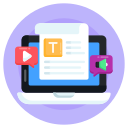App Store Page as Your Trailer
Front-load the benefit users crave. Replace feature nouns with action verbs and end-state imagery. Keep scannability with short lines. Ask a friend to read aloud; if they smile or nod, you’re close. Post two headline options and we’ll vote on the stronger hook.
App Store Page as Your Trailer
Sequence screenshots as a mini-plot: problem, turning point, resolution. Each caption should complete a sentence that starts with “Now I can…” Make it legible on small screens. Share your sequence order, and we’ll suggest a narrative tweak to sharpen momentum.






